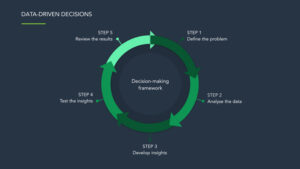Introduction:
In today’s competitive digital landscape, effective Paid Ads Management is crucial for businesses aiming to maximize their online presence and drive growth. As companies increasingly invest in paid advertising, optimizing paid ads management becomes essential to ensure that every dollar spent generates the highest possible return. By strategically refining ad targeting, creative elements, and budget allocation, businesses can enhance their visibility, engage their target audience more effectively, and achieve their marketing objectives with greater efficiency.
paid ads management
paid advertising management
A key aspect of optimizing paid ads management involves leveraging data-driven insights to fine-tune campaign performance. Analyzing metrics such as click-through rates, conversion rates, and cost per acquisition allows advertisers to identify what works and what needs adjustment. This iterative process of testing and refining ensures that ad campaigns remain relevant and impactful, adapting to changing market conditions and consumer behaviors.
By continuously monitoring and adjusting strategies based on performance data, businesses can maintain a competitive edge and maximize the effectiveness of their paid ads management efforts.
The Paid Ads Management with detail:
-
Precision Targeting:
Precision targeting is a game-changer in paid ads management, transforming how businesses connect with their ideal customers. By harnessing advanced targeting capabilities offered by various advertising platforms, you can zero in on specific audience segments with unparalleled accuracy. This means defining your target audience based on a range of criteria, such as demographics, interests, behaviors, and geographic location.
Such detailed targeting ensures that your ads are shown to individuals who are most likely to engage with your brand, leading to higher conversion rates and a more efficient use of your advertising budget. This level of precision not only maximizes the relevance of your ads but also significantly enhances the overall effectiveness of your campaigns.
best pay per click management
paid campaign management
Moreover, precision targeting allows for a more personalized advertising experience, which can significantly boost customer engagement. When your ads are tailored to meet the specific needs and preferences of your audience, they become more compelling and relevant, driving higher click-through rates and stronger customer connections. This personalized approach fosters brand loyalty and encourages repeat business, as customers are more likely to respond positively to ads that resonate with their individual interests.
By continuously refining your targeting strategies based on performance data and market trends, you can maintain an edge in a competitive landscape, ensuring that your ads remain impactful and drive sustained growth for your business.
-
Budget Optimization:
-
Performance Tracking:
-
Creative Enhancement:
Creative enhancement is a pivotal component of effective paid ads management, playing a crucial role in capturing attention and driving engagement. By continually refining your ad creatives—such as visuals, copy, and calls-to-action—you ensure that your ads stand out in a crowded digital landscape. This involves experimenting with various elements, from eye-catching graphics and compelling headlines to persuasive messaging and strong calls-to-action.
A/B testing different versions of your ads allows you to pinpoint which creative elements resonate most with your audience. This iterative process not only boosts engagement but also increases the likelihood of converting viewers into customers, making your advertising spend more effective and efficient.
pay per click search engine management
pay per click management agency
Furthermore, creative enhancement contributes to maintaining a fresh and relevant brand presence. As consumer preferences and trends evolve, updating your ad creatives ensures that your campaigns stay aligned with current market dynamics. This adaptability helps you capture the attention of your target audience and foster a stronger connection with your brand. By regularly refreshing your ad designs and messaging, you keep your brand top-of-mind and encourage repeat interactions.
This ongoing commitment to creativity not only improves campaign performance but also builds long-term brand loyalty. In essence, creative enhancement transforms your ads from mere promotional tools into dynamic and compelling elements of your overall marketing strategy, driving better results and higher returns on investment.
-
Data-Driven Decisions:
Data-driven decisions are the cornerstone of successful paid ads management, empowering businesses to make informed choices that enhance campaign performance. By leveraging comprehensive analytics and performance metrics, you can uncover valuable insights into how your ads are performing. This data includes key indicators such as Click-Through Rates (CTR), Conversion Rates, and Cost Per Acquisition (CPA).
With a clear understanding of these metrics, you can identify which aspects of your campaigns are working well and which areas need improvement. This approach allows for precise adjustments, ensuring that your advertising strategy is continually optimized for maximum effectiveness.
pay per click management fees
pay per click ppc management
Furthermore, adopting a data-driven mindset fosters a proactive approach to ad management. Rather than relying on guesswork or assumptions, you base your decisions on concrete evidence and real-time feedback. This means regularly analyzing performance data to spot trends, measure success, and refine your strategies accordingly. For example, if certain targeting parameters are yielding better results, you can allocate more resources to those segments.
Conversely, underperforming ads can be adjusted or paused to redirect budget towards more successful tactics. Embracing data-driven decisions not only enhances your ability to respond swiftly to market changes but also ensures that your advertising spend is strategically allocated for the best possible return on investment.
-
Long-Term Growth:
Long-term growth is a fundamental benefit of a well-executed paid ads management strategy, offering sustained advantages far beyond immediate campaign results. Effective paid ads management lays the groundwork for continuous brand visibility and customer engagement, which are crucial for enduring success. By consistently optimizing campaigns and leveraging insights from performance data, businesses can build a robust advertising framework that drives incremental improvements over time.
This proactive approach ensures that your ads remain relevant and impactful, fostering a deeper connection with your audience and enhancing brand loyalty.
pay per click advertising management services
paid ads strategy
Moreover, investing in paid ads management supports scalable growth by adapting strategies to evolving market trends and consumer behaviors. As you gather more data and refine your campaigns, you can identify emerging opportunities and adjust your tactics to stay ahead of the competition. This adaptability not only amplifies the effectiveness of your current ads but also positions your brand for long-term success.
By focusing on strategic, data-driven decisions and continuous optimization, paid ads management contributes to a solid foundation for ongoing growth, ensuring that your advertising efforts yield sustained value and a higher return on investment over the long term.
Conclusion
In conclusion, effective paid ads management is pivotal for maximizing your return on investment and achieving your marketing goals. By strategically targeting your audience, optimizing ad placements, and continuously analyzing performance metrics, businesses can significantly enhance their visibility and engagement. Investing in professional ad management ensures that every dollar spent on advertising contributes to building brand recognition and driving conversions.
The expertise and tools available in paid ads management enable precise control over your campaigns, allowing for dynamic adjustments that align with shifting market trends and consumer behavior.
Ultimately, a well-executed paid ads strategy not only boosts immediate results but also contributes to long-term business growth. The competitive advantage gained through meticulous management and optimization of ad spend can set your business apart in a crowded marketplace. Whether you’re looking to increase brand awareness, drive sales, or foster customer loyalty, effective paid ads management is essential.
Embracing this approach empowers businesses to navigate the complexities of digital advertising with confidence, ensuring sustained success and a solid return on investment.
Furthermore, successful paid ads management requires a comprehensive understanding of various advertising platforms and their unique features. Whether it’s Google Ads, Facebook Ads, or other platforms, each offers distinct tools and capabilities for reaching target audiences. By mastering these platforms and tailoring strategies to their specific strengths, businesses can enhance their ad performance and achieve better results.
Effective optimization not only boosts the immediate impact of campaigns but also builds a foundation for long-term success in the ever-evolving digital advertising landscape.
FAQs
1. What is paid ads management, and why is it important?
Paid ads management involves the strategic planning, execution, and optimization of paid advertising campaigns across various platforms. It’s crucial because it helps businesses effectively allocate their ad budgets, target the right audience, and achieve better results, such as increased visibility, higher engagement, and improved conversion rates.
2. How do I determine the right budget for my paid ad campaigns?
Determining the right budget involves evaluating your business goals, the cost of reaching your target audience, and your expected return on investment. Start with a clear understanding of your objectives and experiment with different budgets to find the optimal amount that delivers the best results without overspending.
3. What are the key metrics to track in paid ads management?
Key metrics include Click-Through Rate (CTR), Conversion Rate, Cost Per Click (CPC), Cost Per Acquisition (CPA), and Return on Ad Spend (ROAS). Monitoring these metrics helps assess campaign performance and make data-driven decisions to optimize and improve your advertising strategy.
4. How can I improve the performance of my paid ads?
To improve performance, focus on refining your targeting, optimizing ad creatives, and testing different ad variations. Regularly analyze campaign data to identify what’s working and what’s not, and make adjustments based on insights to enhance the effectiveness of your ads.
5. What are some common mistakes to avoid in paid ads management?
Common mistakes include neglecting thorough audience research, setting unrealistic expectations, and failing to regularly monitor and optimize campaigns. Additionally, overlooking the importance of A/B testing and not analyzing performance data can lead to wasted ad spend and missed opportunities.
6. How can paid ads management benefit my business in the long run?
Effective paid ads management can drive sustained business growth by consistently reaching and engaging your target audience, improving brand visibility, and increasing conversions. With ongoing optimization and strategic planning, paid ads can deliver long-term value and help your business adapt to changing market conditions.







